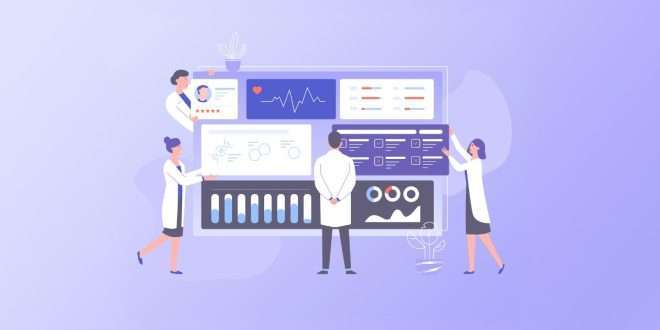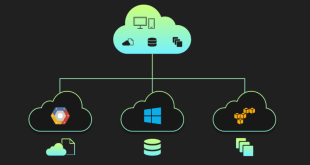As the use of cloud computing continues to soar, concerns about data privacy and security are more pertinent than ever. Data anonymization emerges as a critical technique that aims to protect sensitive information while maintaining data utility for analysis and research. In this blog, we delve into the state-of-the-art techniques for data anonymization, exploring how businesses can strike the delicate balance between privacy and utility in the cloud.
The Significance of Cloud Data Security
Before we explore data anonymization, it is essential to understand the significance of cloud data security. With cloud computing becoming the backbone of modern businesses, the need to safeguard sensitive data has never been greater. Cloud data security involves a range of measures, including encryption, access controls, and regular audits, to protect data from unauthorized access and data breaches.
Understanding Data Anonymization
Defining Data Anonymization
Data anonymization refers to the process of transforming personal or sensitive data into a form that cannot be linked back to specific individuals. By doing so, businesses can use and share data for analytical purposes without compromising the privacy and confidentiality of individuals involved.
Key Challenges in Data Anonymization
Data anonymization is not without challenges. Striking the right balance between privacy and data utility is a delicate task. If data is overly anonymized, it may lose its value for analysis. On the other hand, insufficient anonymization can lead to re-identification risks, where seemingly anonymous data can be linked back to individuals.
State-of-the-Art Techniques for Data Anonymization
K-Anonymity
K-Anonymity is a fundamental technique in data anonymization. It ensures that each record in a dataset is indistinguishable from at least K-1 other records concerning certain identifiers. By doing so, K-Anonymity mitigates the risk of re-identification.
Differential Privacy
Differential Privacy is another powerful technique that adds statistical noise to the data, making it difficult for potential adversaries to single out individuals. This approach provides a rigorous mathematical framework for measuring the privacy guarantees of anonymized data.
Generalization and Suppression
Generalization involves replacing specific values in a dataset with more general categories. Suppression, on the other hand, involves removing certain data points to ensure anonymity. Both techniques help in preventing the identification of individuals while maintaining data utility.
Striking the Balance: Privacy vs. Data Utility
Achieving an optimal balance between privacy and data utility is crucial for successful data anonymization in the cloud. Businesses must carefully assess the risks associated with data disclosure and the utility of anonymized data for their analytical needs. Here are some strategies to achieve this balance:
Risk Assessment
Conducting a comprehensive risk assessment helps identify potential privacy risks in the dataset. Understanding the sensitivity of the data and the possible harm of re-identification assists in making informed decisions about the level of anonymization required.
Data Perturbation Techniques
Data perturbation involves adding random noise to the data to mask specific values while preserving the overall statistical properties. Techniques like data masking and data shuffling can enhance privacy while retaining the data’s usefulness for analysis.
Anonymization Policies and Governance
Implementing clear anonymization policies and governance frameworks ensures that data anonymization is consistently applied across the organization. This fosters a culture of data privacy and responsible data sharing.
The Future of Data Anonymization in Cloud Computing
The future of data anonymization in cloud computing looks promising, with ongoing research and advancements in privacy-preserving technologies. Innovations in artificial intelligence and machine learning are likely to offer more sophisticated and accurate anonymization techniques, further enhancing data security in the cloud.
Final Words
In conclusion, data anonymization serves as a crucial pillar of cloud data security, enabling businesses to leverage the power of data analytics without compromising individual privacy. By implementing state-of-the-art anonymization techniques and striking the right balance between privacy and data utility, organizations can navigate the complexities of data anonymization successfully.
Commonly Asked Questions
1. Can anonymized data be re-identified?
While data anonymization strives to prevent re-identification, it is not foolproof. As technology advances, re-identification attacks become more sophisticated, emphasizing the need for continuous improvement in anonymization techniques.
2. How does data anonymization affect data analysis?
Data anonymization can impact data analysis by reducing the granularity of the data. This may lead to a loss of detailed insights, but the trade-off ensures individual privacy is protected.
3. Is data anonymization mandatory for all cloud data?
The need for data anonymization depends on the nature of the data and regulatory requirements. Organizations handling sensitive or personal information should prioritize data anonymization to comply with privacy regulations.
4. How often should data anonymization be performed?
Data anonymization should be performed whenever new data is collected or when there are changes in privacy regulations. Regular assessments of the effectiveness of anonymization techniques are essential to adapt to evolving threats.
5. Can anonymization negatively impact data quality?
Anonymization may impact data quality to some extent, but the benefits of preserving privacy and complying with regulations outweigh potential drawbacks. Careful consideration of anonymization techniques can help mitigate data quality issues.
 webfily
webfily



